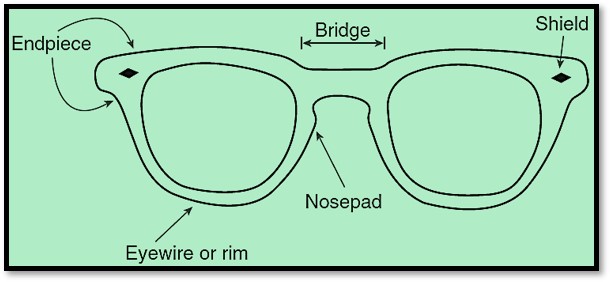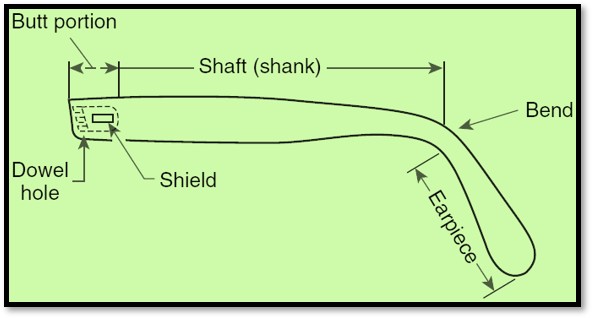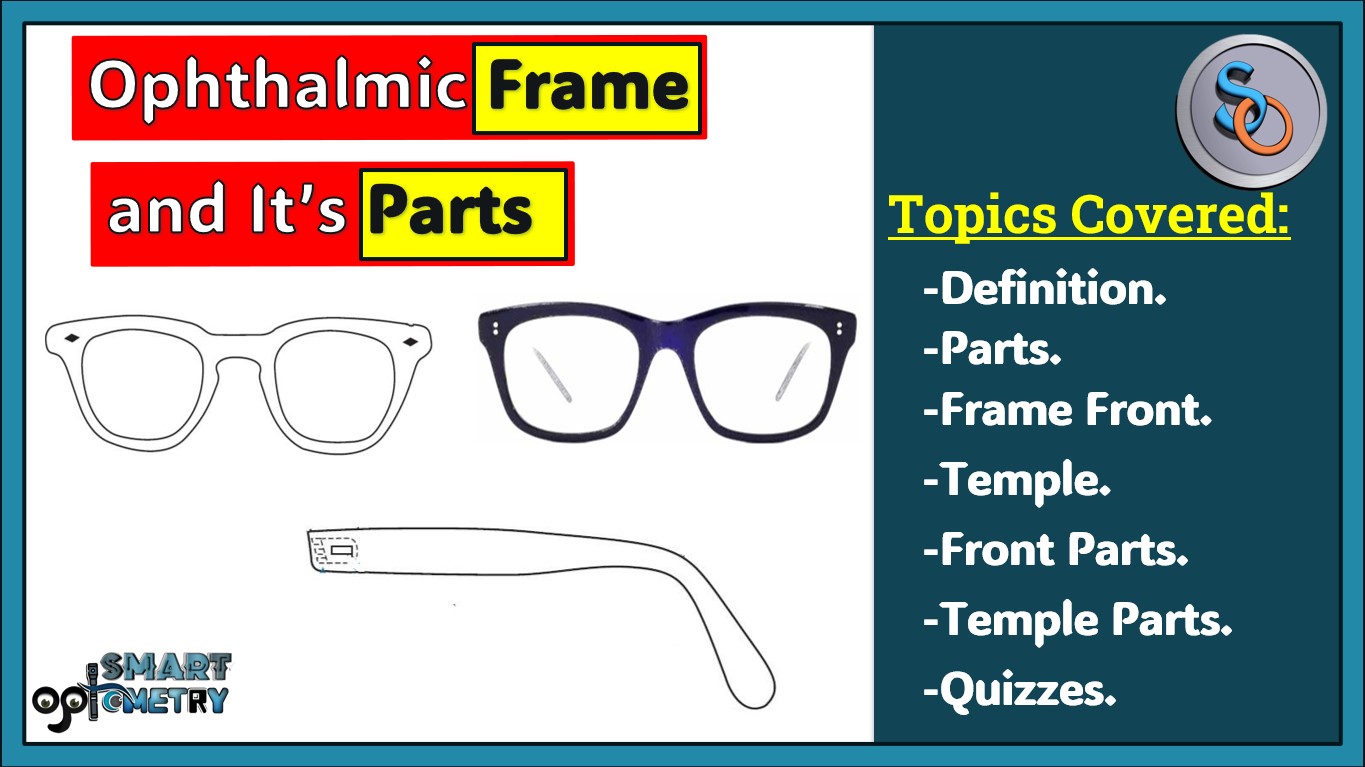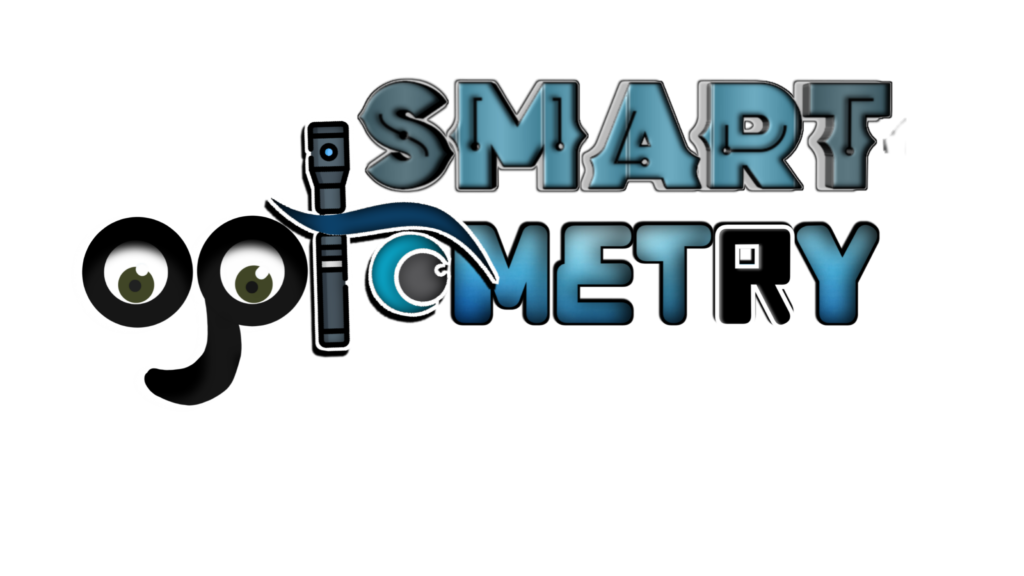Table of Contents
What is an Ophthalmic Frame?
An ophthalmic frame refers to the structural component of eyeglasses that holds the lenses containing the ophthalmic prescription in place in front of the eyes. Essentially, it is the part of the spectacles that serves as the foundation for supporting and positioning the corrective lenses in alignment with the wearer’s eyes.

The primary function of the ophthalmic frame is to securely hold the lenses in the correct position relative to the eyes, ensuring optimal vision correction and comfort for the wearer. It plays a crucial role in maintaining the prescribed optical power and alignment of the lenses, allowing the wearer to experience clear and accurate vision.
Ophthalmic frames come in various shapes, styles, and materials to accommodate the diverse preferences and needs of individuals. They may feature different designs, such as full-rim, semi-rimless, or rimless frames, each offering distinct aesthetic appeal and functionality.
In addition to providing structural support for the lenses, ophthalmic frames also contribute to the overall aesthetic appearance of the eyewear. They can enhance the wearer’s facial features, complement their personal style, and make a fashion statement.
Parts of an Ophthalmic Frame:
- A frame generally consists of two parts:
- The front
- The Temples
A. The Front:
The frame front of an ophthalmic frame serves as the foundational structure that houses and supports the lenses, playing a pivotal role in both functionality and aesthetics. Comprising several integral components, understanding the anatomy of the frame front is essential for selecting the perfect eyewear. Let’s delve into the various parts that constitute the frame front and their significance.
Parts of the Frame Front:

1. The Bridge:
- The bridge, positioned between the lenses, forms the central support that rests on the nose.
- Its design influences comfort and fit, making it a crucial aspect of eyewear customization.
2. The Eyewire or Rim:
- Encircling the lenses, the eyewire or rim not only secures the lenses but also contributes to the overall style and durability of the frame.
3. The End Pieces:
- Situated at the outer edges of the frame front, the end pieces serve as attachment points for the temples.
- They play a vital role in ensuring structural integrity and stability.
4. The Metal Shield:
- Occasionally found in plastic frames, the metal shield reinforces the end pieces, providing additional strength and stability, particularly for hinge attachment.
5. The Nose Pads:
- Offering support and comfort, nose pads rest on the nose bridge.
- Whether directly attached to the frame or connected via guard arms or pad arms, their design influences wearability and long-term comfort.
6. The Hinges:
- Crucial for temple attachment, hinges consist of inter-fitting barrels, with odd numbers such as three, five, or seven.
- Their construction varies but is commonly categorized based on the total number of barrels, simplifying selection and maintenance.
B. The Temple:
The temple of an ophthalmic frame, also known as the temple arm or simply the temple, plays a crucial role in eyewear stability and comfort. As the part of the frame that extends over the ears, temples help secure the spectacles in place, ensuring a snug fit for wearers. Let’s explore the anatomy of the temple and its various components in detail.
Parts of the Temple:

1. The Butt Portion or Butt End:
- Situated closest to its attachment point on the frame front, the butt portion forms the initial segment of the temple, anchoring it securely to the frame.
2. The Bend:
- Found at the point where the temple curves downward to accommodate the ear, the bend marks the transition from the vertical alignment to the horizontal orientation over the ear.
3. The Shank or Shaft:
- Extending between the butt end and the bend, the shank or shaft constitutes the main body of the temple, providing structural support and flexibility.
4. The Earpiece:
- Beyond the bend and following the curvature behind the ear, the earpiece, also known as the bent-down portion or curl, ensures a comfortable and secure fit by conforming to the contours of the wearer’s ear.
Questions for You:
1. Which component of the frame front serves as attachment points for the temples?
- A) The Nose Pads
- B) The Eyewire or Rim
- C) The End Pieces
- D) The Metal Shield
2. What part of the frame front offers support and comfort by resting on the nose?
- A) The Hinges
- B) The Bridge
- C) The Nose Pads
- D) The Eyewire or Rim
3. Which component of the frame front is crucial for temple attachment?
- A) The Nose Pads
- B) The End Pieces
- C) The Bridge
- D) The Hinges
4. Which part of the temple is closest to its attachment to the frame front?
- A) The Bend
- B) The Shank or Shaft
- C) The Butt End
- D) The Earpiece
5. What marks the transition from the vertical alignment to the horizontal orientation over the ear in a temple?
- A) The Bend
- B) The Earpiece
- C) The Shank or Shaft
- D) The Butt Portion or Butt End
6. What is the portion of the temple between the butt end and the bend called?
- A) The Butt Portion or Butt End
- B) The Bend
- C) The Shank or Shaft
- D) The Earpiece
- Check Our Courses: Ophthalmic Instrumentation, Clinical Refraction, Contact Lens, Binocular Vision, Dispensing Optics, MCQs in Optometry
- Download our App “Optometry Notes & MCQs” from Google Play Store.




